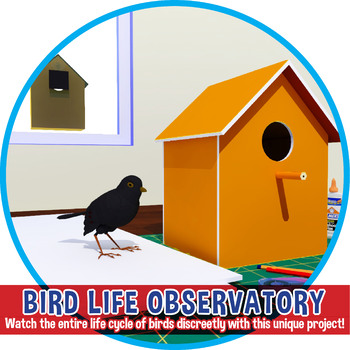Project Based Learning - Make a Birdhouse & Wildlife Observatory! STEM / PBL
- Zip
Description
Not just another birdhouse - This is a real wildlife observatory!
Imagine your students building habitats that will allow them to witness nature right through their classroom window - what a learning resource!
Imagine the thrill and excitement as they compare the sizes, species and colors of the different birds nesting inside their observatories.
This unique & innovative STEM / STEAM project allows your students to do just that as they learn many new skills along the way.
Use this project to introduce and enrich your lessons about:
- Measurement
- Scale / Proportion
- Regular & Irregular Geometric Shapes
- Engineering - Building a Model
- Habitats & Shelters
- Genetic Inheritance
- Life Cycle of Birds
- Animal Traits & Behavior
Product Features:
Professionally designed & illustrated documents
All vector artwork = High resolution files that can be printed standard or as large as a professional printer can handle!
Includes two step-by-step instruction manuals layouts:
- The booklet layout can be easily printed, folded down the middle and stapled.
- The standard layout allows for digital display during classroom instruction
Also included are full-size, foam board plans to be printed and pasted directly onto the foam board sheet prior to cutting.
***PDF files come zipped - please use a decompressing (unzipping) program to extract the files
Support us! Remember to rate & comment on this product, and if you have any questions, you’ll be happy to find that we’ll respond quite promptly.
Follow us on https://www.teacherspayteachers.com/Store/Scholarcraft and have a look at our other quality digital products.





